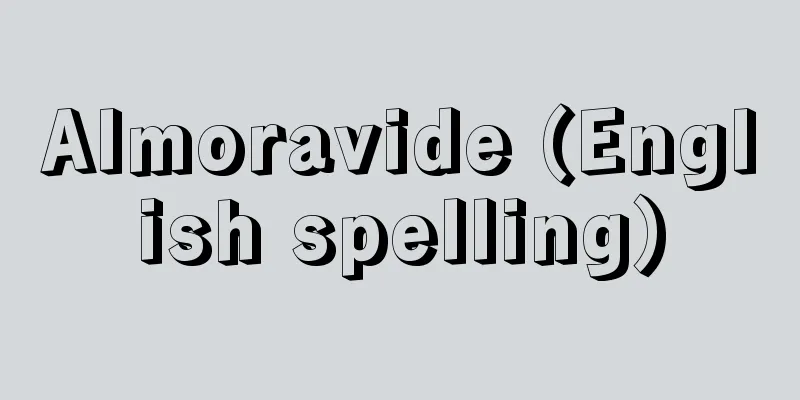Hereditary disease

|
Genetic diseases are a general term for morphological abnormalities or congenital diseases controlled by specific genes, or abnormalities in the molecular structure of components of living organisms. Almost all characteristics of living organisms, such as the shape and structure of the body, biochemical properties such as enzymes and proteins, mental activities and behavior, etc., are controlled by genes, but are also greatly influenced by environmental factors. Among the so-called genetic diseases, there are those that are clearly caused by mutations or abnormalities in a single gene, those that involve multiple genes, and those where environmental factors, including the fetal period, play a major role rather than genes. To investigate the extent to which genes are involved in these various diseases and abnormalities, studies of inheritance patterns by family lineage, collection of a large number of abnormalities and diseases and statistical analysis are carried out to determine the degree of involvement of genetic factors, whether the trait is dominant (overt) or recessive (recessive), whether it is sex-linked, etc. The twin method is often used to investigate the relationship between genetic and environmental factors, and the degree of involvement of environmental factors is inferred by comparing the various traits of identical twins, who are genetically identical. As research into various morphological, physiological, and functional abnormalities and diseases progresses, it has gradually become clear that genetic diseases are caused by abnormalities in the number and structure of chromosomes, metabolic abnormalities of enzymes and proteins, and abnormalities in the molecular structure of blood pigments (hemoglobin) and serum proteins. The main genetic diseases are as follows: [Kuroda Yukiaki] Genetic morphological abnormalitiesThe first cause is an abnormality in the number of chromosomes. Normally, both sexes have 46 chromosomes, of which 44 are autosomes shared by both sexes, and the remaining two are sex chromosomes, with XY for men and XX for women. A change in the number of these chromosomes disrupts the balance of genes, which is lethal for the individual and is a major cause of miscarriage and stillbirth. However, in cases of an increase in relatively small chromosomes, a deletion of the Y chromosome, which is a sex chromosome but contains almost no genes (Turner syndrome), or an increase in an inactivated X chromosome (Klinefelter syndrome), the individual survives and various abnormalities appear. In Turner syndrome, the individual appears female in appearance, but the ovaries are underdeveloped, and the individual is infertile and short in stature. In Klinefelter syndrome, the individual appears male in appearance, but the testes are underdeveloped, and female-like sexual characteristics appear. Other genetic malformations include skin abnormalities such as achromatopsia, xeroderma pigmentosum, anofingering, and congenital ichthyosis, as well as many bone abnormalities such as chondrodystrophy (short limbs), multiple cartilaginous exostoses, osteogenesis imperfecta (van der Heve syndrome), Marfan syndrome (arachnodactyly), true microcephaly, hydrocephalus, anencephaly, cleft lip, cleft palate, congenital hip dislocation, congenital clubfoot, brachydactyly, polydactyly, syndactyly, ectodactyly, clinodactyly, cleft pedicle, and cleft pes. There are also abnormalities and conditions of the ear and eyes, such as ear fistula, microphthalmia, anophthalmia, buphthalmos, iris coloboma, congenital cataracts, congenital stationary night blindness, color vision deficiencies, optic nerve atrophy, and retinal glioma; while some of these are quite clearly controlled by genes, the expression of some is influenced by environmental factors. [Kuroda Yukiaki] Genetic dysfunctionThese are genetic abnormalities that appear in the physiological functions of various organs in the body, as well as in the functions of absorption and excretion. Some are caused by abnormalities in renal tubule absorption and excretion, such as renal diabetes insipidus, renal diabetes mellitus, and vitamin D-resistant rickets, while others are caused by abnormalities in lipid metabolism, such as essential hypercholesterolemia and amaurosis dementia, and some cause abnormalities in the physiological functions of muscles and nerves, such as progressive muscular dystrophy, congenital myotonia, and hereditary ataxia. [Kuroda Yukiaki] Genetic metabolic disordersA genetic abnormality that appears in the metabolism of sugar, amino acids, proteins, lipids, etc. in the body, and the substances produced by the metabolism are detected in urine and blood. Abnormalities caused by various enzyme deficiencies or defects are known, such as phenylketonuria, cystinuria, alkaptonuria, galactosemia, acatalaseemia, glycogen storage disease, familial cretinism, glucose-6-phosphate dehydrogenase deficiency (primaquine hypersensitivity), and hypophosphatasia. There are also special protein deficiencies, such as congenital agammaglobulinemia, analbuminemia, afibrinogenemia, and ceruloplasmin deficiency (Wilson's disease). Some of these abnormalities can be prevented by feeding a special diet during a certain period of development in newborns. [Kuroda Yukiaki] Genetic protein molecule abnormalitiesThis is a so-called molecular disease, in which genetic abnormalities appear in the chemical structure of protein molecules in tissues and blood. Among these, abnormalities in hemoglobin are well known. Normal hemoglobin contains four globin proteins, two α (alpha) chains and two β (beta) chains, and contains 574 amino acids. In hemoglobin S (sickle cell anemia), the abnormality occurs when the sixth amino acid in the β chain is changed from glutamic acid to valine. In hemoglobin C, the amino acid at the same position is replaced by lysine. Other abnormalities, such as hemoglobin E and M, occur when one of the amino acids in the hemoglobin molecule is replaced by another amino acid. [Kuroda Yukiaki] Other abnormalitiesSchizophrenia, manic-depressive disorder, epilepsy, Graves' disease, and allergies are also diseases that have a high genetic factor, but they do not necessarily develop in a definitive way, and in many cases are difficult to explain by simple genes. Environmental factors other than genes also play a large role in each of these diseases. Hypertension and cancer are also related to both genetic and environmental factors. [Kuroda Yukiaki] Causative genes of genetic diseasesThere are about 30,000 genes that have been identified as causative of human genetic diseases. All genetic information in humans is incorporated into the genome in each cell nucleus, that is, the DNA (deoxyribonucleic acid) contained in the 22 pairs of autosomes and the two sex chromosomes, and all genetic information is stored by the sequence of the four bases that make up DNA. There are a total of 3 billion pairs of these four bases, and all of the base sequences were determined in 2002 (the complete human genome was decoded). Of this DNA, only 2-3% actually functions as genes, and the total number of genes is said to be 30,000-100,000. If a mutation occurs in such genetic DNA, it will cause an abnormality in the function of the gene, which will cause a genetic disease. Currently, there are about 8,000 genes known on the 22 pairs of autosomes, about 500 on the X chromosome, and about 30 on the Y chromosome, and about 60 genes are known in mitochondria. [Kuroda Yukiaki] Genetic testingFor cases where the causative gene of a genetic disease is known, DNA is extracted from a portion of blood or tissue, fragmented with restriction enzymes, and fractionated by electrophoresis on an agarose gel (agarose is the main component of agar and is a neutral polysaccharide with strong gelling power. It is used as a support for electrophoretic separation of nucleic acids and proteins). The double-stranded DNA is then separated into single strands by alkaline denaturation, and molecular hybridized with single-stranded DNA fragments of the genetic disease gene labeled with various radioisotopes or fluorescence on a nitrocellulose membrane (nitrocellulose is used as a solid phase to bind biopolymers such as nucleic acids and proteins), and a diagnosis is made as to whether the DNA to be examined will form a molecular hybrid with the DNA of the genetic disease. This type of genetic diagnosis can be used to diagnose cancer, cardiomyopathy, hemophilia, color blindness, dwarfism, etc. [Kuroda Yukiaki] "Human Genetics" by Takashi Komai (1966, Baifukan) ▽ "Human Genetics" revised edition by Yataro Tajima and Hide Matsunaga (1976, NHK Publishing) ▽ "Introduction to Clinical Molecular Genetics" by DJ Weatherall, translated by Ichiro Matsuda and Yasuyuki Fukumaki (1987, Nanzando) ▽ "Chromosome Engineering" edited by Takeo Sekiya et al. (1990, Kodansha) ▽ "Molecular Biology of Genetic Diseases: Investigating Causative Genes" by K.E. Davis and A.P. Reed, translated by Takehiko Sasazuki and Hideyuki Yoshizumi (1991, Nanzando) ▽ " Introduction to Genetic Medicine" by Alan EH Emery, translated by Akihiko Kawai (1991, Ohmsha) ▽ "Introduction to Genetic Diseases" edited by Fumimaro Takaku et al. (1993, Nanzando) ▽ "Genetic Diseases" edited by Shimada Kazunori and written by Maeda Shuichiro et al. (1993, Kagaku Dojin)" ▽ "The Civilization of Genes" by Francois Gros, translated by Harada Hiroshi and Sasaki Kazuo (1993, Maruzen)" ▽ "Genetic Diagnosis - Its Principles and Applications" by Shimada Kazunori and Maeda Shuichiro (1994, Nanzando)" ▽ "Pathology of Disabled Children" by Tamaki Yoshitaka (1994, Nihon Bunka Kagakusha)" ▽ "Gene Mapping - The Frontline of Genome Research" by L. Wingerson, translated by Makino Kenji and Aono Yuri (1994, Kagaku Dojin)" ▽ "Essential Atlas of Pediatrics" edited by Kusunoki Tomokazu et al. (1994, Nanzando)" ▽ "Introduction to Human Genetics" edited by Imaizumi Yoko (1994, Baifukan)" ▽ "Clinical Genetics 6" edited by Furusho Toshiyuki et al. Gene Therapy and Prevention (1995, Shindan to Chiryousha) ▽ Osaka University Institute of Microbial Diseases (ed.), Bioscience of Diseases: Frontiers in Life Research (1995, Osaka University Press) ▽ Kagawa Yasuo (ed.), Molecular Medical Science Series 3: The Living Body as a Site of Dynamic Reactions (1996, Medical View and Gloview) ▽ Jeff Lion and Peter Goner, translated by Matsuura Hideaki, The Birth of Gene Therapy: The Drama that Shocked the World Began Here (1998, Zest) ▽ Nakagomi Yao, A Book to Understand Genes and Genetic Diagnosis (1998, Yodosha) ▽ Kida Eishiro, Genes and Life: Where Do I Come From and Where Am I Going (1998, Caikon Publishing, Kinokuniya Bookstore) ▽ Shibuya Miyo, Narimatsu Hideaki, et al., Pathology for Medical Students, 2nd Edition (1999, Kodansha) ▽ "Gene: The Blueprint for Life, Aging, Sickness, and Death" by Steve Jones, translated by Kawada Manabu (1999, Hakuyosha)" ▽ "Gene Medicine on the Move: Urgent Ethical Issues" by Matsuda Ichiro, edited by the Editorial Committee of the Genetics Promotion Association (1999, Shokabo)" ▽ "New Women's Medical Series 28: The Basics and Clinical Practice of Genetics" (2000, Nakayama Shoten) edited by Takeya Yuji, edited by Aono Toshihiro et al., and edited by Ohama Kozo (2000, Nakayama Shoten)" ▽ "Molecular Medicine of Disease" edited by Kasuga Masato et al. (2000, Kyoritsu Shuppan)" ▽ "Illustrated World of the Human Genome: From the Mysteries of Life to Genome Business" by Shimizu Nobuyoshi (2001, PHP Institute)" ▽ "Irreplaceable Life: Modern Health, Medicine, and Welfare" edited by Katahira Yoshihiko (2001, Kiri Shobo)" ▽ "The Human Genome and You: Deciphering Genes" by Keiko Yanagisawa (2001, Shueisha/Shueisha Bunko)" ▽ "Basic Knowledge of DNA, Genes, and Genetic Engineering You Should Know" by Gordon R. Carter and Stephen M. Boyle, supervised translation by Ikunoshin Kato (2001, Takara Shuzo Bio Research Institute, Academic Information and Publishing Division, Maruzen Publishing)" ▽ "Introduction to New Biochemistry" by Kunio Nakajima et al., 5th Edition (2002, Nanzando)" ▽ "The Perilous Slope to Turning People into Resources: Human Genome Analysis, Cloning, ES Cells, and Gene Therapy" by Eiko Fukumoto (2002, Gendaishokan)" ▽ "The Practice of Bioinformatics" edited by Yasufumi Murakami and Toshio Furuya (2003, Kodansha) " ▽ "An Invitation to Genetic Medicine" revised 3rd edition by Norio Shinkawa and Kyoko Abe (2003, Nanzando)" ▽ "Genetics of Sex and Disease" by Hiroshi Hori (2003, Kaiyusha) " ▽ "Basic knowledge of genetic medicine that you must know - An introductory book to genetic medicine" edited by Tasuku Honjo and edited by Shigeki Arii et al. (2003, Medical Do)" ▽ "Super Illustrated: An Eye-Opening Introduction to Genetics and DNA Studies - From Darwin to Gene Therapy" by Steve Jones, illustrated by Bolin van Loon, translated by Daisuke Yamamoto (2003, Kodansha)" ▽ "100 Mysteries of Human Genetics" by Emiko Samaki et al. (2003, Tokyo Shoseki)" ▽ "What Can DNA Tell Us? - From Genetic Diseases and DNA Analysis to the Origins of Humankind" by Takao Kuriyama (Kodansha, Bluebacks)" ▽ " What is the Human Genome Project? - The DNA Analysis Project that Involved the Entire World" by Bertrand Jordan, translated by Shigeki Mitake (Kodansha, Bluebacks)" ▽ "Medicine of Congenital Anomalies - Understanding Genetic Diseases and Fetal Anomalies" by Eishiro Kida (Chuko Shinsho) " "Genetics of Life and Health" by Hironori Kodama (Shincho Bunko)" [References] | | | | | | | | | | | | | | | | | | | | | | | | | | | | | | | | | |Source: Shogakukan Encyclopedia Nipponica About Encyclopedia Nipponica Information | Legend |
|
特別な遺伝子によって支配される形態的な異常や先天的な疾患、あるいは生体の構成成分の分子構造の異常などを総称して遺伝病という。生物のほとんどすべての形質、たとえば体の形や構造、酵素やタンパク質などの生化学特性、精神的活動や行動などは遺伝子により支配される一方、環境要因によっても大きく影響される。遺伝病といわれるもののなかにも、単一の遺伝子の突然変異や異常によることのはっきりしているものと、多数の遺伝子が関与しているもの、さらに遺伝子よりもむしろ胎生期間を含めた環境要因が大きく作用しているものがある。 このような各種疾患や異常に遺伝子がどの程度関与しているかを調べるには、家系による遺伝様式の調査や多数の異常および疾患の収集と統計的解析などが行われ、遺伝的要因の関与の程度、その形質の優性(顕性)・劣性(潜性)関係、また伴性かどうかなどを判定する。遺伝的要因と環境要因の関係を調べるのに、しばしば双生児法が使用され、遺伝的には同一である一卵性双生児の種々の形質を比較し、環境要因のかかわりの程度が推測される。 遺伝病は形態的、生理的、機能的な各種異常や疾患の研究が進むにつれて、染色体の数や構造の異常によるもの、酵素やタンパク質などの代謝異常によるもの、血色素(ヘモグロビン)や血清タンパク質など分子構造の異常によるものなどが、しだいに明らかになってきた。おもな遺伝病には、次のようなものがある。 [黒田行昭] 遺伝的形態異常原因としてまず染色体の数の異常によるものがある。通常、染色体数は男女とも46本で、このうち44本は男女共通の常染色体であり、残りの2本が性染色体で男はXY、女はXXの構成をもつ。これら染色体の数の変化は各遺伝子の均衡を崩し、その個体にとっては致死となり、流産や死産の大きな原因となる。しかし、比較的小形の染色体の増加や性染色体でも遺伝子がほとんど含まれていないY染色体の欠失(ターナー症候群)、不活性化したX染色体の増加(クラインフェルター症候群)などにおいては、個体は生存して種々の異常が現れる。ターナー症候群では外観は女性であるが卵巣の発育が悪く、不妊で身長も低い。また、クラインフェルター症候群では外観は男性であるが精巣の発育が悪く、女性のような性徴が現れる。 このほか、遺伝的形態異常としては色素失調症、色素性乾皮症、無指紋、先天性魚鱗癬(ぎょりんせん)など皮膚に異常の現れるもの、軟骨異栄養症(四肢短縮症)、多発性軟骨性外骨腫(しゅ)、骨形成不全症(ファン・デル・ヘーベ症候群)、マルファン症候群(くも状指趾(しし))、真性小頭症、脳水腫、無脳、口唇裂(こうしんれつ)、口蓋裂(こうがいれつ)、先天性股関節脱臼(こかんせつだっきゅう)、先天性内反足、短指、多指、合指、欠指、斜指、裂指、裂足など、骨の異常も多い。また、耳瘻孔(じろうこう)、小眼球、無眼球、牛眼、虹彩(こうさい)欠損、先天性白内障、先天性停止性夜盲、色覚異常、視神経萎縮、網膜膠腫(こうしゅ)など耳や目の異常や状態もあるが、これらは遺伝子による支配がかなり明確なものがある一方、環境要因によってその発現が影響を受けるものもある。 [黒田行昭] 遺伝的機能異常体内の諸臓器の生理的機能や吸収・排泄(はいせつ)などの諸機能に遺伝的な異常が現れるものである。腎(じん)性尿崩症、腎性糖尿病、ビタミンD抵抗性くる病など腎尿細管の吸収や排泄の異常によっておこるもの、本態性過コレステロール血症、黒内障性痴呆(ちほう)など脂質代謝の異常によるもの、進行性筋ジストロフィー症、先天性筋強直症、遺伝性運動失調症など筋や神経の生理的機能に異常を生じるものもある。 [黒田行昭] 遺伝的代謝異常体内での糖、アミノ酸、タンパク質、脂質などの代謝に遺伝的な異常が現れるもので、尿や血中にその代謝によってできた成分が検出される。フェニルケトン尿症、シスチン尿症、アルカプトン尿症、ガラクトース血症、無カタラーゼ血症、グリコーゲン蓄積症、家族性クレチン症、グルコース-6-リン酸脱水素酵素欠乏症(プリマキン過敏症)、低フォスファターゼ症など種々の酵素の欠乏や欠損による異常が知られている。また、先天性無γ(ガンマ)-グロブリン血症、無アルブミン血症、無フィブリノゲン血症、セルロプラスミン欠損症(ウィルソン病)など特殊なタンパク質の欠乏症もある。これらのなかには新生児のある発育期間中に、特別な食事を与えることによって異常の発現を予防できるものもある。 [黒田行昭] 遺伝的タンパク質分子の異常いわゆる分子病といわれるもので、組織や血液中のタンパク分子などの化学的構成に遺伝的な異常が現れる。なかでも血色素(ヘモグロビン)の異常がよく知られている。正常の血色素に含まれるグロビンタンパク質は2個ずつのα(アルファ)鎖およびβ(ベータ)鎖の合計4個の単体からなり、574個のアミノ酸が含まれる。ヘモグロビンS(鎌(かま)形赤血球貧血)では、このうちβ鎖の6番目のアミノ酸がグルタミン酸からバリンに変わったための異常である。また、ヘモグロビンCは同じ場所のアミノ酸がリジンに置換した異常である。このほか、ヘモグロビンEやMなどもヘモグロビン分子のアミノ酸の1個が他のアミノ酸に置換したことによる異常である。 [黒田行昭] その他の異常統合失調症、そううつ病、てんかん、バセドウ病、アレルギーなども遺伝的要因の高い疾患であるが、決定的に発病するわけではなく、単純な遺伝子によっては説明が困難な場合が多い。それぞれ遺伝子以外の環境要因も大きく関与している。また、高血圧症やがんも遺伝的要因と環境要因がその発現に関与する。 [黒田行昭] 遺伝病の原因遺伝子ヒトの遺伝病のなかで、その原因遺伝子の同定されているものが3万個ほどある。ヒトのもつすべての遺伝情報は、各細胞核中のゲノム、すなわち22対の常染色体と2本の性染色体に含まれるDNA(デオキシリボ核酸)のなかに組み込まれ、DNAを構成する4種の塩基の配列順序によって、すべての遺伝情報が蓄えられている。この4種の塩基は、全部で30億対あり、そのすべての塩基配列が2002年に決定された(ヒト全ゲノムの解読完了)。このDNAのなかで、実際に遺伝子として働くのはその2~3%で、遺伝子の総数も3~10万個といわれている。このような遺伝子DNAに突然変異がおこれば、遺伝子としての働きに異常が生じ、遺伝病の原因になる。現在、22対の常染色体上には約8000個、X染色体上には約500個、Y染色体上には約30個の遺伝子が知られており、ミトコンドリアにも約60個の遺伝子が知られている。 [黒田行昭] 遺伝子診断遺伝病の原因遺伝子が明らかなものは、血液や組織の一部からDNAを抽出し、制限酵素でこのDNAを断片化し、アガロースゲルの電気泳動で分画する(アガロースは寒天の主要な成分でゲル化力の強い中性多糖。核酸やタンパク質の電気泳動分離の支持体として用いられる)。そしてアルカリ変性により2本鎖のDNAを1本鎖に分離して、ニトロセルロースの膜(ニトロセルロースは核酸やタンパク質のような生体高分子を結合させる固相として用いられる)上で種々の放射性同位元素や蛍光で標識した遺伝病遺伝子の1本鎖DNA断片と分子雑種を形成させて、調べようとするDNAが遺伝病のDNAと分子雑種をつくるかどうかを診断する。このような遺伝子診断により、がんや心筋症、血友病、色覚異常、小人症などの診断が可能である。 [黒田行昭] 『駒井卓著『人類の遺伝学』(1966・培風館)』▽『田島弥太郎・松永英著『人間の遺伝』改訂版(1976・日本放送出版協会)』▽『D. J. Weatherall著、松田一郎・服巻保幸訳『臨床分子遺伝学入門』(1987・南江堂)』▽『関谷剛男他編『染色体工学』(1990・講談社)』▽『K・E・デーヴィス、A・P・リード著、笹月健彦・吉住秀之訳『遺伝病の分子生物学――原因遺伝子を探究する』(1991・南江堂)』▽『Alan E. H. Emery著、河合明彦訳『遺伝子医学入門』(1991・オーム社)』▽『高久史麿他編『遺伝子病入門』(1993・南江堂)』▽『島田和典編著、前田秀一郎他著『遺伝病』(1993・化学同人)』▽『フランソワ・グロ著、原田宏・佐々木和生訳『遺伝子の文明』(1993・丸善)』▽『島田和典・前田秀一郎著『遺伝子診断――その原理と応用』(1994・南江堂)』▽『田巻義孝著『障害児の病理』(1994・日本文化科学社)』▽『L・ウィンガーソン著、牧野賢治・青野由利訳『遺伝子マッピング――ゲノム探求の現場』(1994・化学同人)』▽『楠智一他編『必修小児科学アトラス』(1994・南江堂)』▽『今泉洋子編『人間の遺伝学入門』(1994・培風館)』▽『古庄敏行他編『臨床遺伝医学6 遺伝子治療と予防』(1995・診断と治療社)』▽『大阪大学微生物病研究所編『病気のバイオサイエンス――生命研究のフロンティア』(1995・大阪大学出版会)』▽『香川靖雄編『分子医科学シリーズ3 動的な反応の場としての生体』(1996・メジカルビュー社、グロビュー社発売)』▽『ジェフ・ライオン、ピーター・ゴーナー著、松浦秀明訳『遺伝子治療の誕生――世界を震撼させるドラマはここから始まった』(1998・ゼスト)』▽『中込弥男著『遺伝子と遺伝子診断がわかる本』(1998・羊土社)』▽『木田盈四郎著『遺伝子と生命――私はどこからきて、どこへ行くのか』(1998・菜根出版、紀伊國屋書店発売)』▽『渋谷みよ・成松英明他著『医療系学生のための病理学』第2版(1999・講談社)』▽『スティーヴ・ジョーンズ著、河田学訳『遺伝子――生・老・病・死の設計図』(1999・白揚社)』▽『松田一郎著、遺伝学普及会編集委員会編『動きだした遺伝子医療――差し迫った倫理的問題』(1999・裳華房)』▽『武谷雄二総編集、青野敏博他編、大浜紘三担当編集『新女性医学大系28 遺伝の基礎と臨床』(2000・中山書店)』▽『春日雅人他編『病気の分子医学』(2000・共立出版)』▽『清水信義著『図解 ヒトゲノム・ワールド――生命の神秘からゲノム・ビジネスまで』(2001・PHP研究所)』▽『片平洌彦編『かけがえのない生命――現代の保健・医療・福祉』(2001・桐書房)』▽『柳沢桂子著『ヒトゲノムとあなた――遺伝子を読み解く』(2001・集英社/集英社文庫)』▽『ゴードン・R・カーター、ステフェン・M・ボイル著、加藤郁之進監訳『知っておきたいDNA、遺伝子、遺伝子工学の基礎知識』(2001・宝酒造バイオ研究所学術情報・出版部門、丸善発売)』▽『中島邦夫他著『新生化学入門』第5版(2002・南山堂)』▽『福本英子著『人・資源化への危険な坂道――ヒトゲノム解析・クローン・ES細胞・遺伝子治療』(2002・現代書館)』▽『村上康文・古谷利夫編『バイオインフォマティクスの実際』(2003・講談社)』▽『新川詔夫・阿部京子著『遺伝医学への招待』改訂第3版(2003・南江堂)』▽『堀浩著『性と病気の遺伝学』(2003・海游舎)』▽『本庶祐監修、有井滋樹他編『これだけは知っておきたい遺伝子医学の基礎知識――遺伝子医学の入門書』(2003・メディカルドゥ)』▽『スティーヴ・ジョーンズ著、ボリン・ヴァン・ルーン画、山元大輔訳『超図説 目からウロコの遺伝・DNA学入門――ダーウィンから遺伝子治療まで』(2003・講談社)』▽『左巻恵美子他著『ヒトの遺伝の100不思議』(2003・東京書籍)』▽『栗山孝夫著『DNAで何がわかるか――遺伝病・DNA鑑定から人類の根源まで』(講談社・ブルーバックス)』▽『バートランド・ジョーダン著、美宅成樹訳『ヒトゲノム計画とは何か――全世界を巻き込むDNA解析プロジェクト』(講談社・ブルーバックス)』▽『木田盈四郎著『先天異常の医学――遺伝病・胎児異常の理解のために』(中公新書)』▽『児玉浩憲著『暮らしと健康の遺伝学』(新潮文庫)』 [参照項目] | | | | | | | | | | | | | | | | | | | | | | | | | | | | | | | | | |出典 小学館 日本大百科全書(ニッポニカ)日本大百科全書(ニッポニカ)について 情報 | 凡例 |
>>: Genetic recombination - genetic recombination
Recommend
Aphelandra aurantiaca (English spelling)
… [Takabayashi Masatoshi]. … *Some of the termino...
Han Huo - Han Huo
...Others who followed the Ming Dynasty's Zhu...
Tadamasa Okubo - Ookubo Tadamasa
Year of death: Tempo 8.3.19 (1837.4.23) Year of bi...
Ando soil (English spelling)
...The area of black soil in Japan is about 5.5...
Morning assembly - Chourei
〘 noun 〙① Morning worship. A ritual performed in t...
Social science - shakai kagaku (English spelling) social science
In English, the term "social sciences" ...
Utsumi [Hot Spring] - Utsumi
...Industry production is also growing, centering...
Kifune Goko Festival
…The main shrine was originally located further u...
Orange-striped anemone
A marine animal belonging to the phylum Cnidaria,...
Kara Juro - Kara Juro
Playwright, director, actor, and novelist. His re...
Yassi Hoyuk
…The Latin name is Gordium. The modern name of th...
Extroceptor reflex
Physiologically, it is called an exteroceptive ref...
Lay, HN (English spelling) LayHN
…This led to the establishment of the Customs Adm...
"Uramikamwa" - Uramikamwa
…Also, local schools were established in the 22nd...
Rare books (English)
...General term for books that are generally circ...









![Gotsu [city] - Gotsu](/upload/images/67cb8a042e37d.webp)